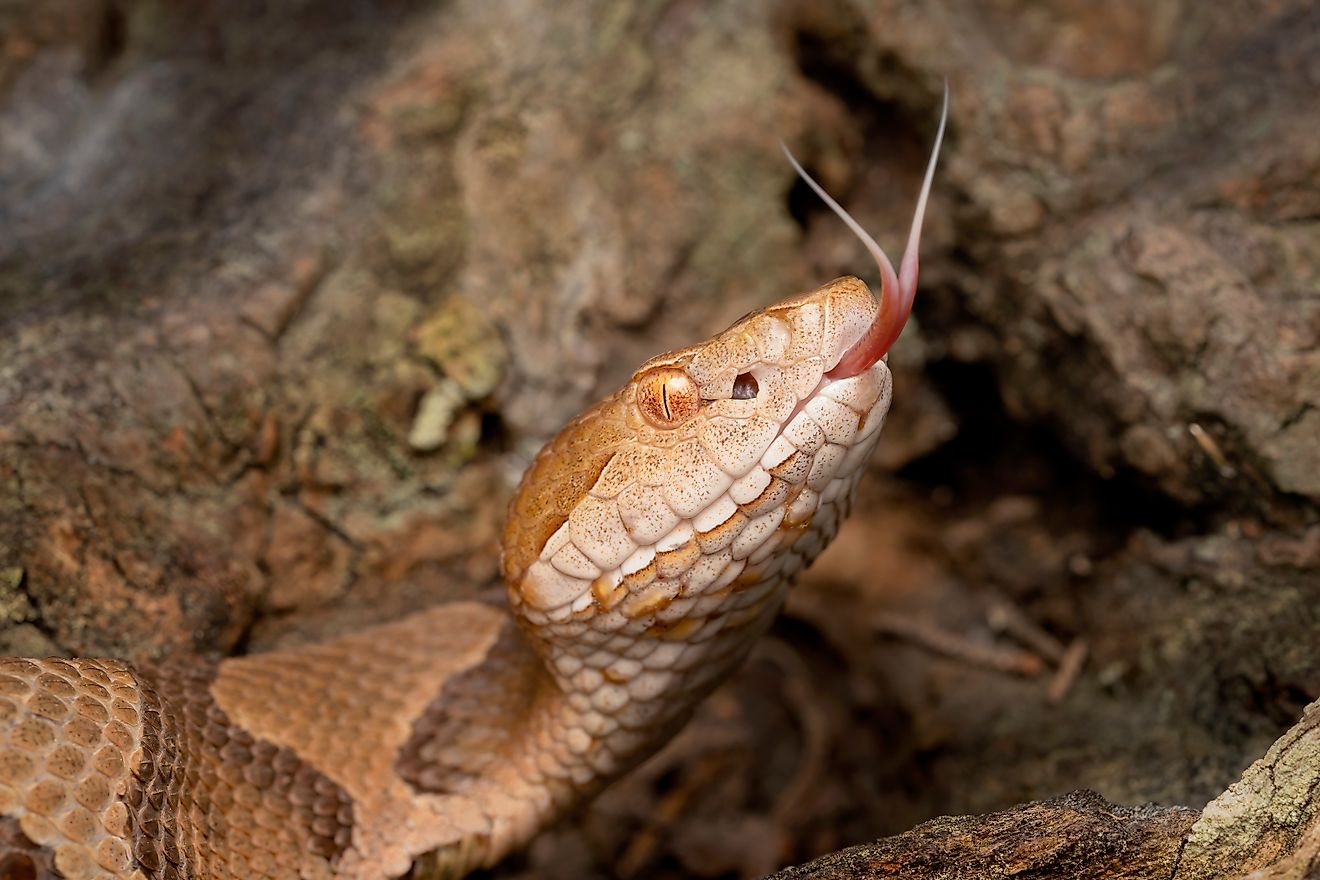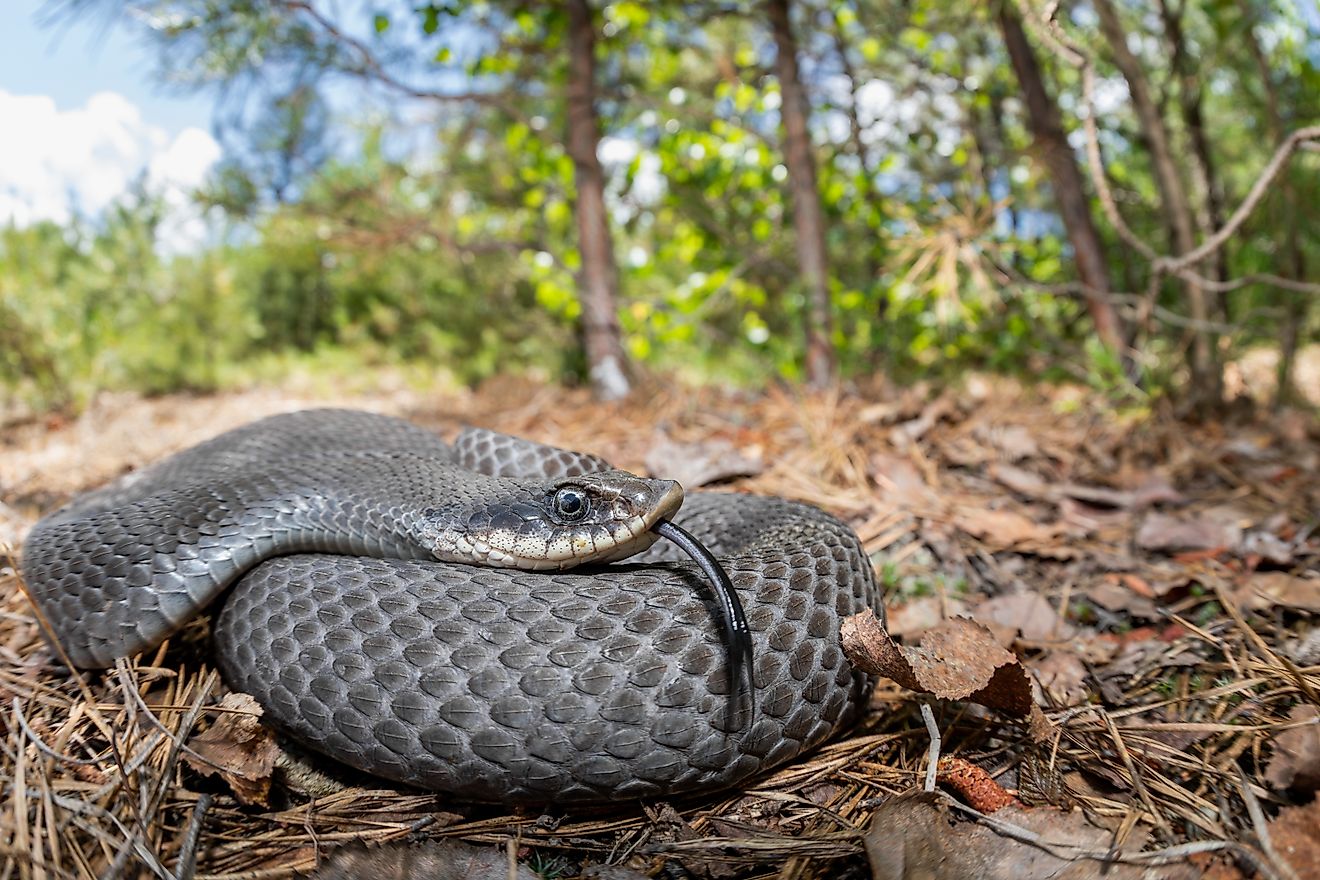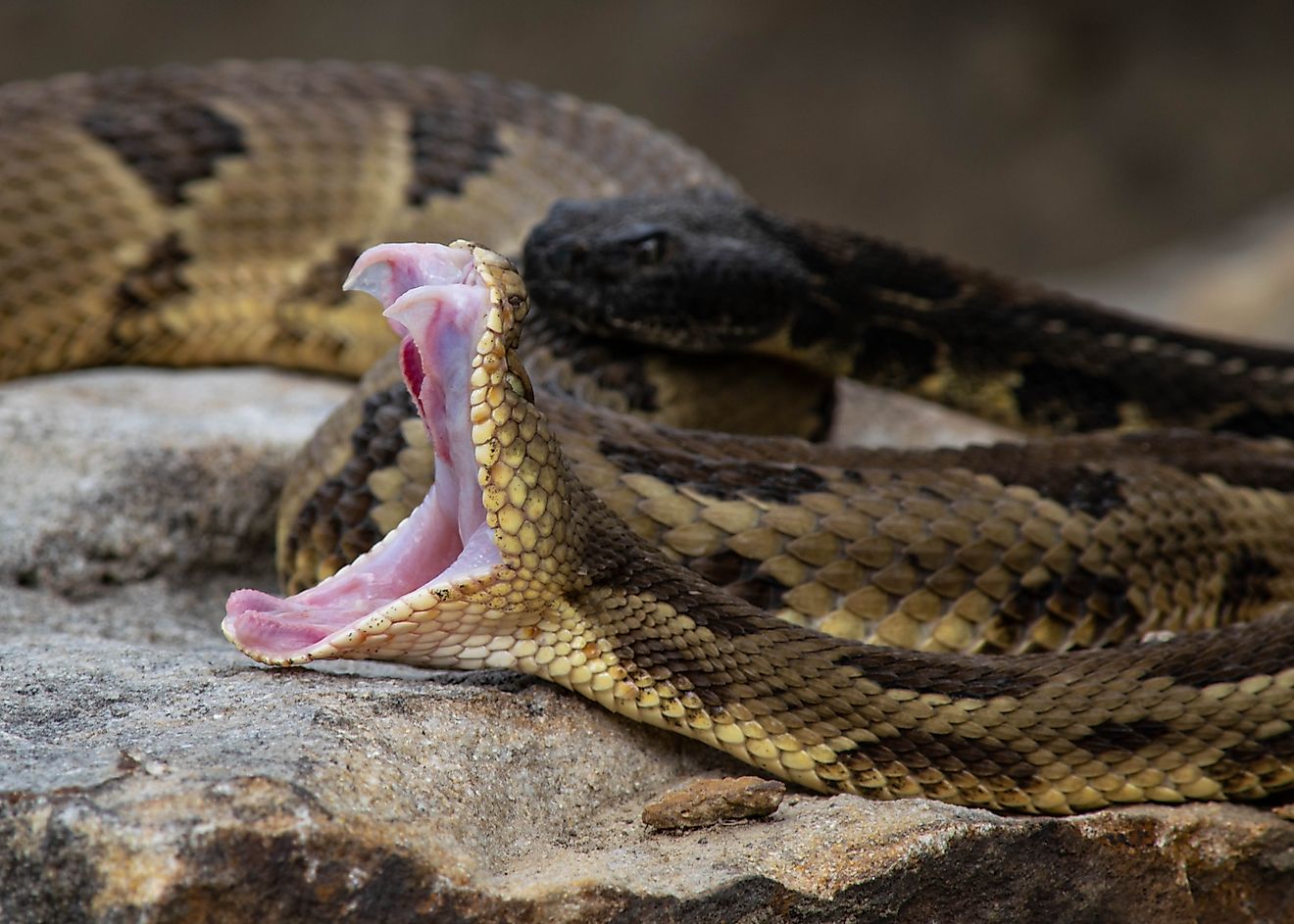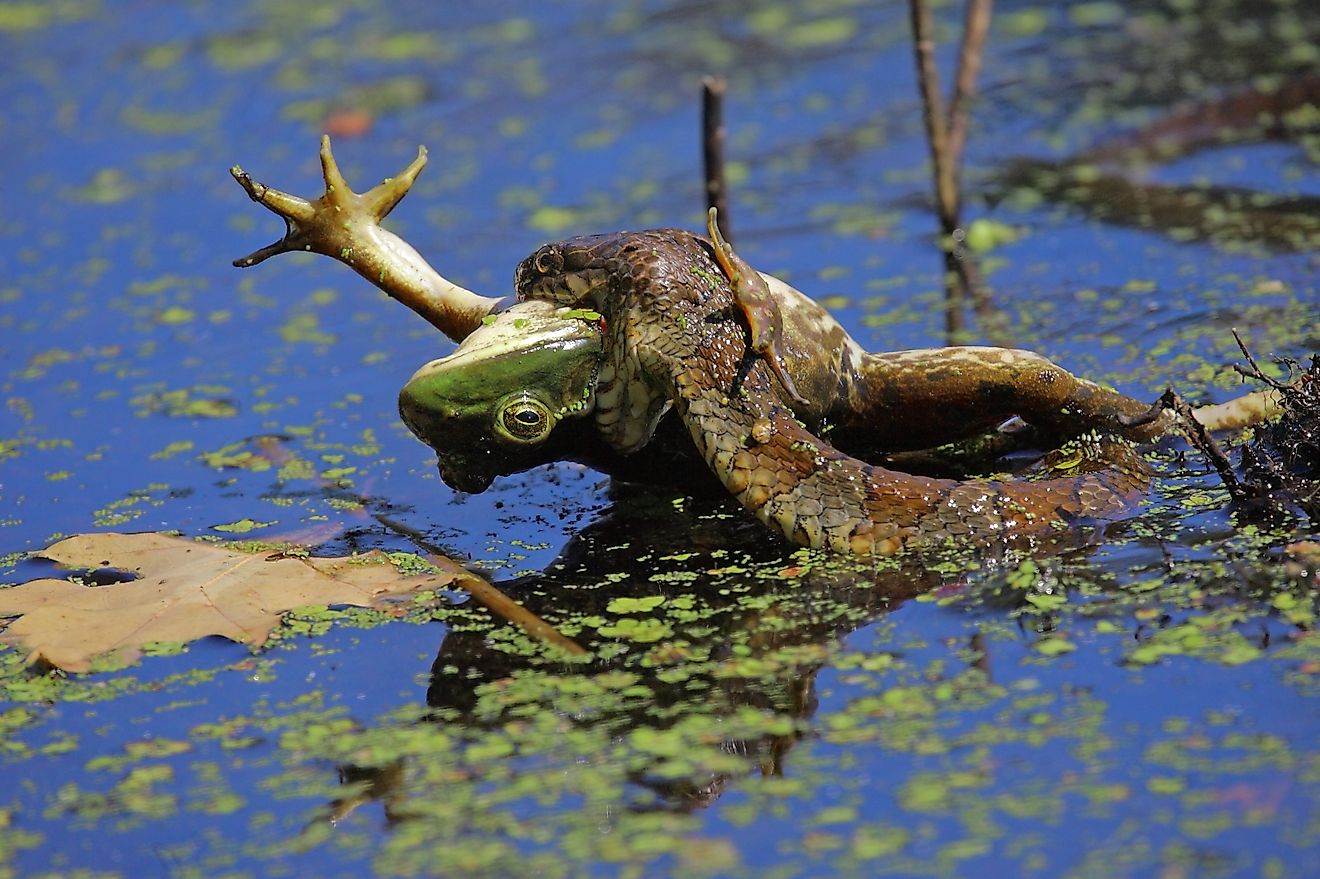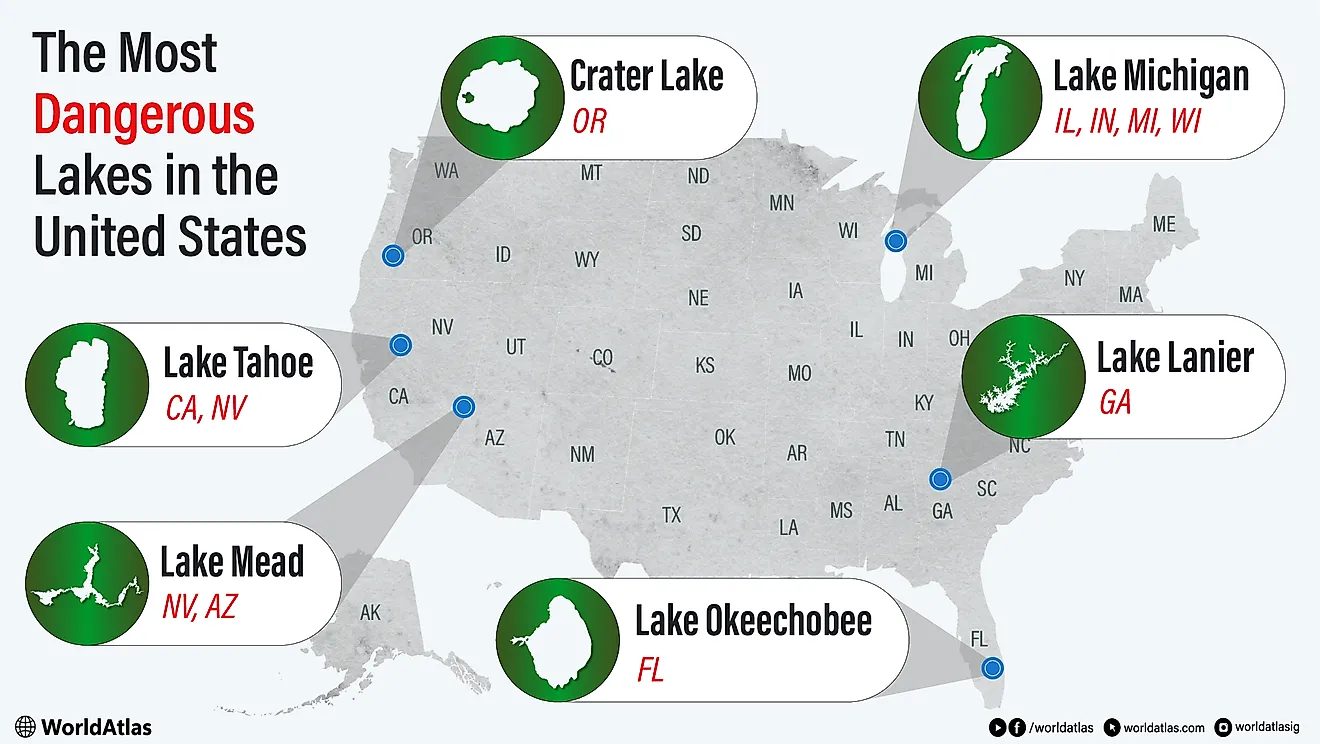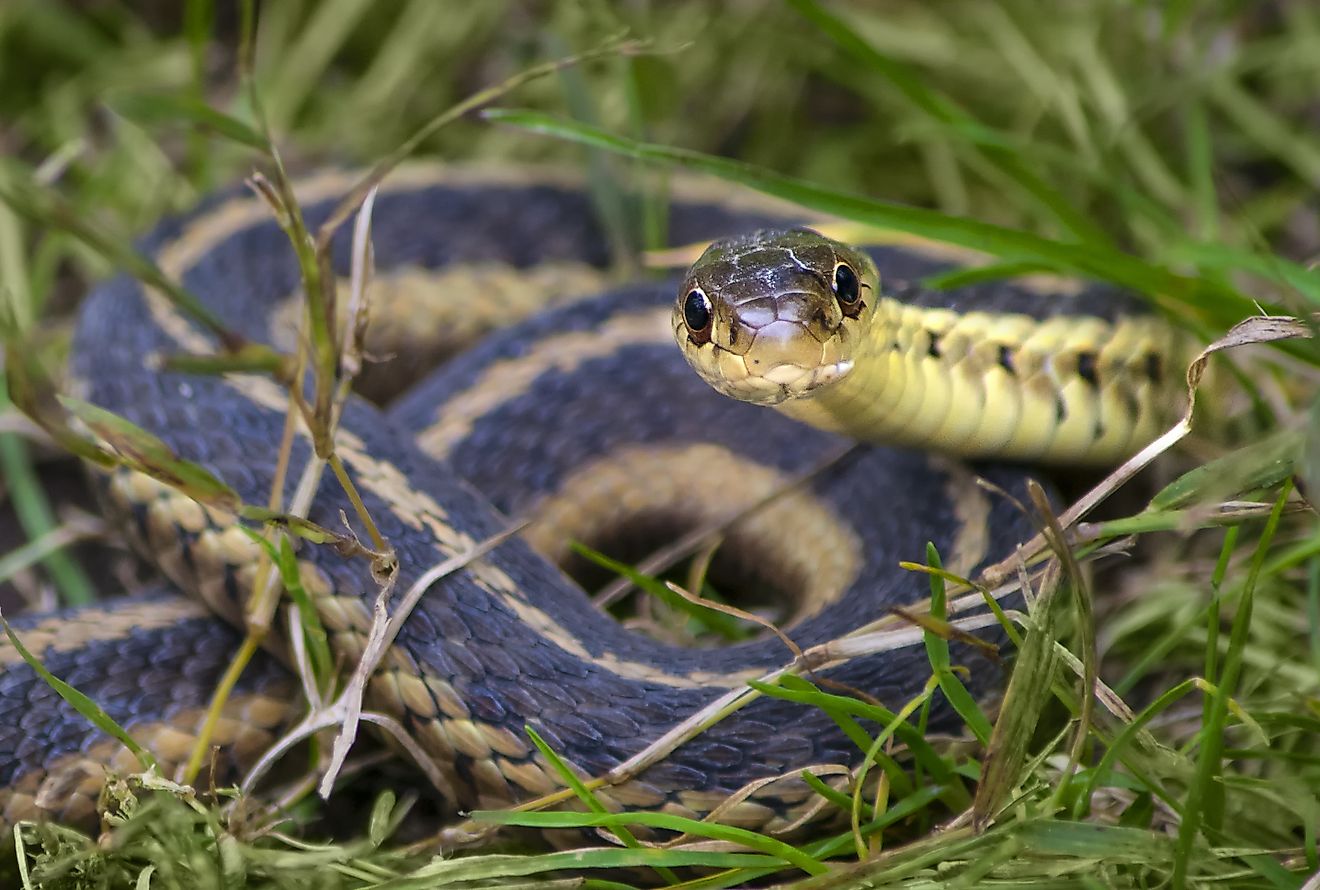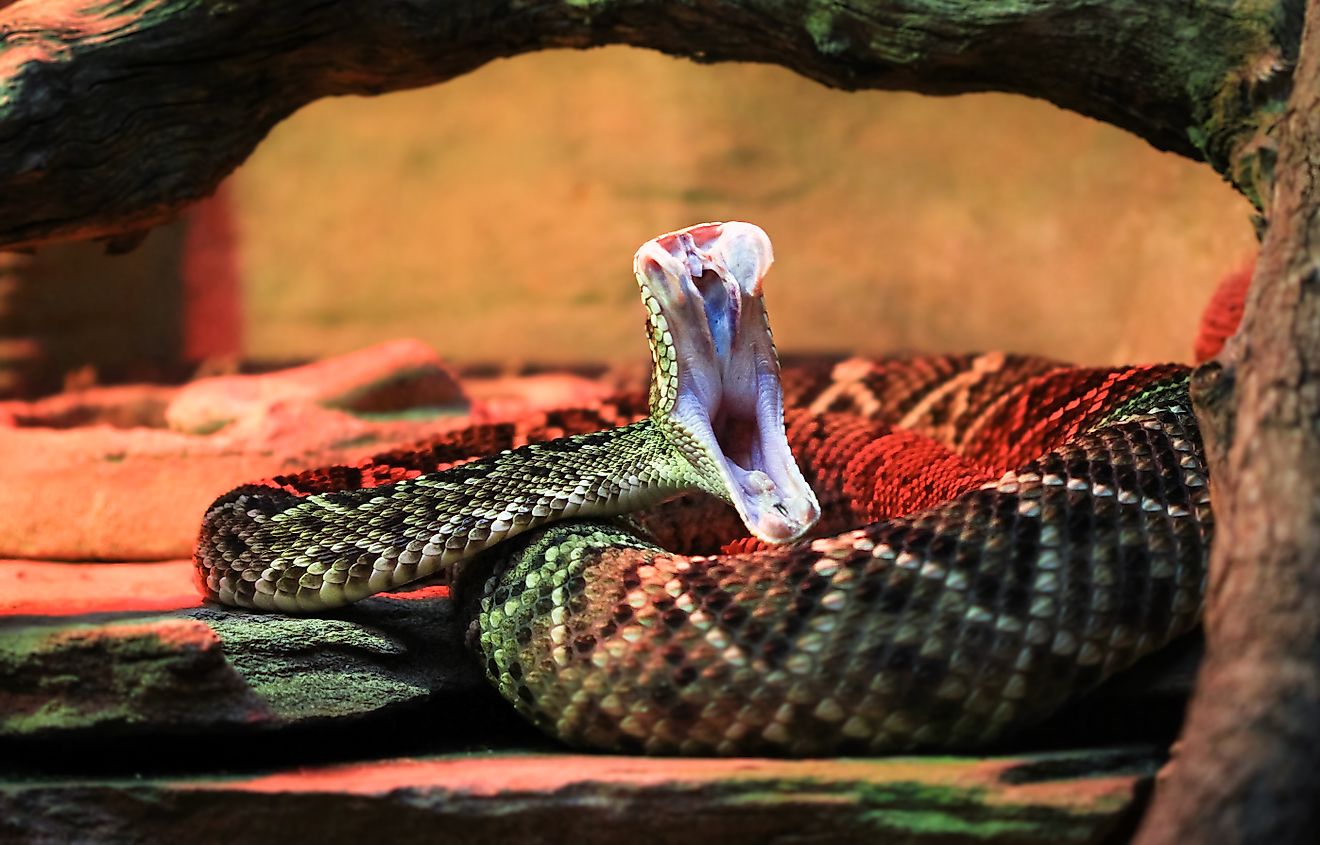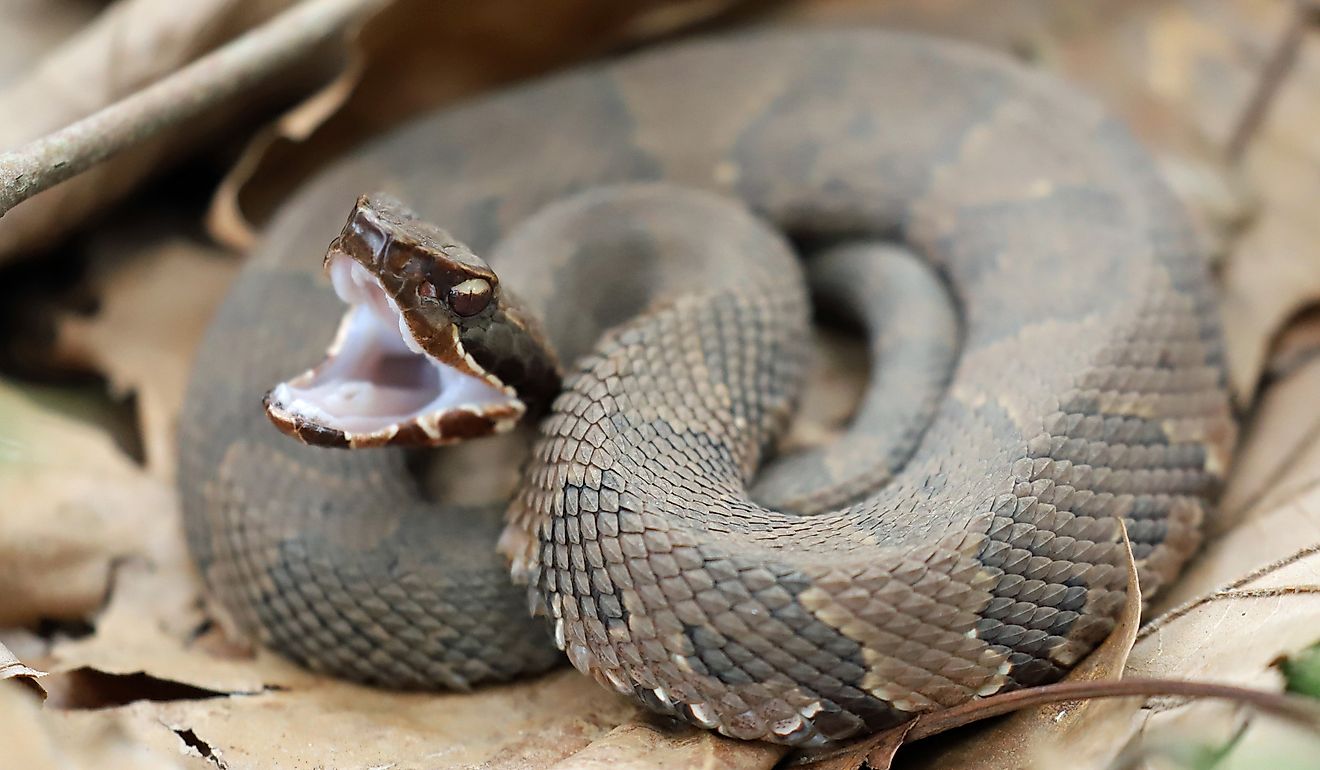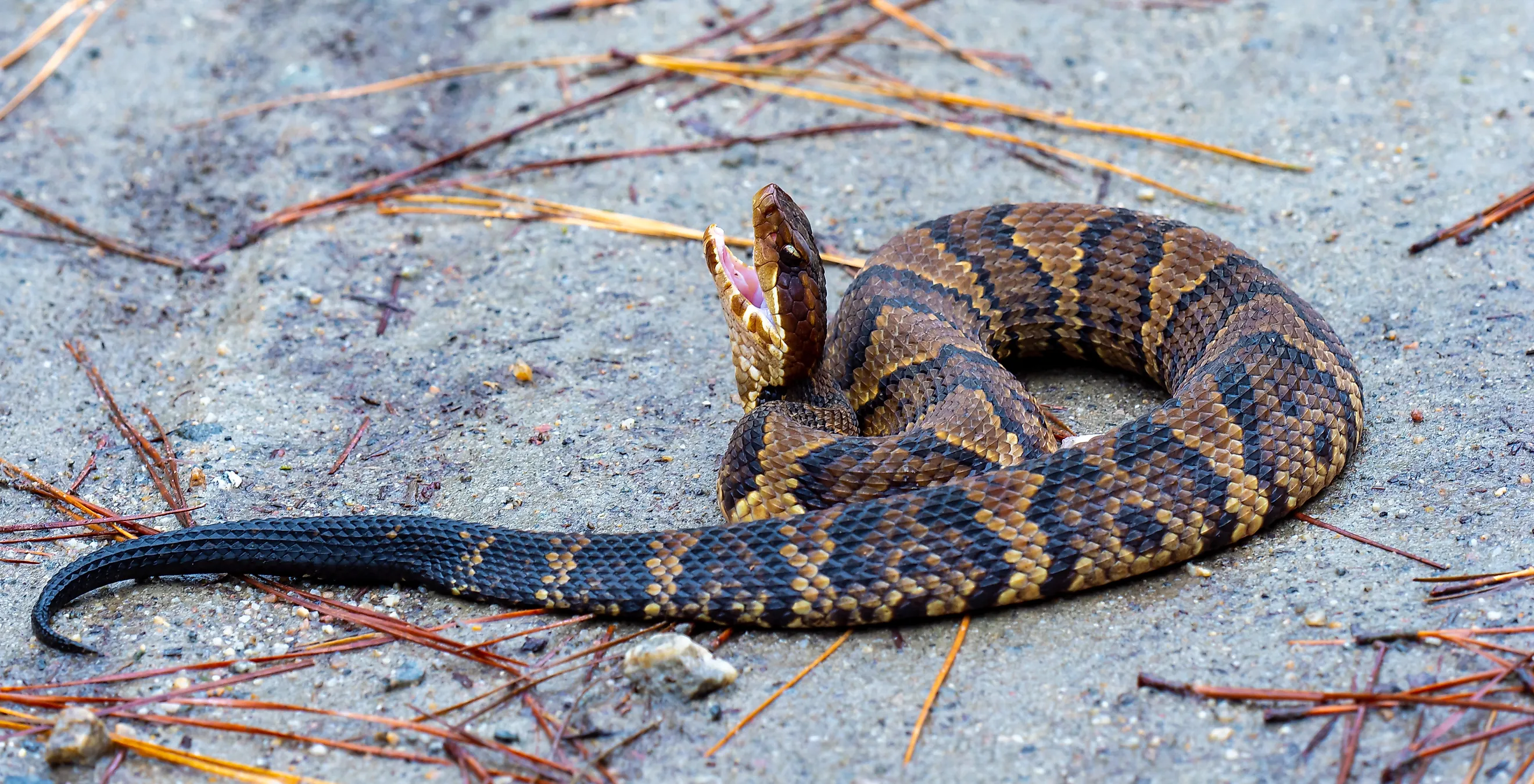
The Most Snake Infested Rivers In The United States
A multitude of snakes thrive in the wetlands, swamps, and river systems across the United States, where varying climates and abundant prey make it easy for them to flourish. From the slow-moving waters of Florida to the vast floodplains of the Mississippi, certain rivers, however, are better known for their especially high concentrations of these slithery reptiles.
Today, we will examine what are often called the most snake-infested rivers in the country. In these places, ecology, geography, and climate come together to sustain some of the densest populations in all of the Americas.
St. Johns River, Florida
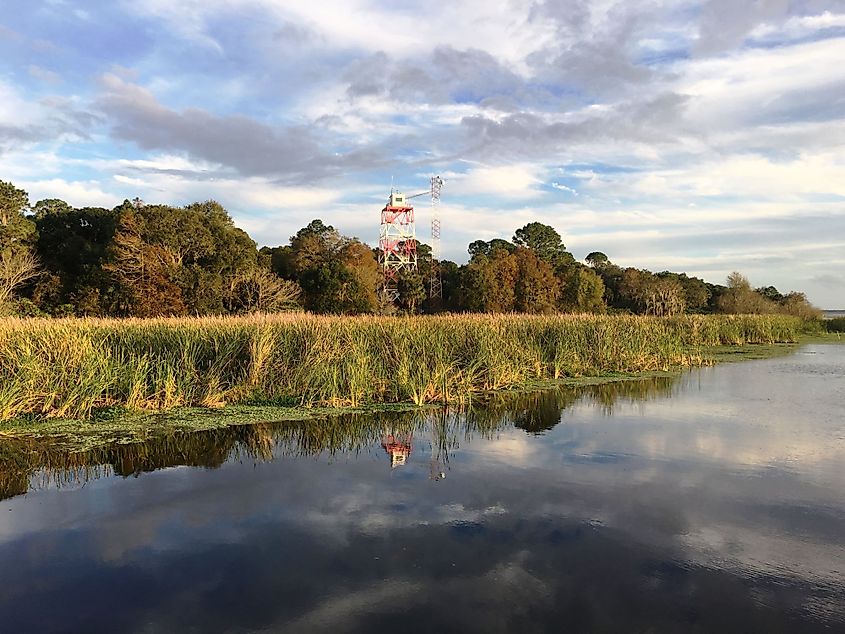
The St. Johns River, stretching over 310 miles from Indian River County to Jacksonville, is widely regarded a Florida’s most snake-infested waterway, featuring one of the highest populations in all of the United States, in fact. Its meandering, slow-moving current, abundance of water-based plantlife, and vast network of tributaries create ideal conditions for a variety of species.
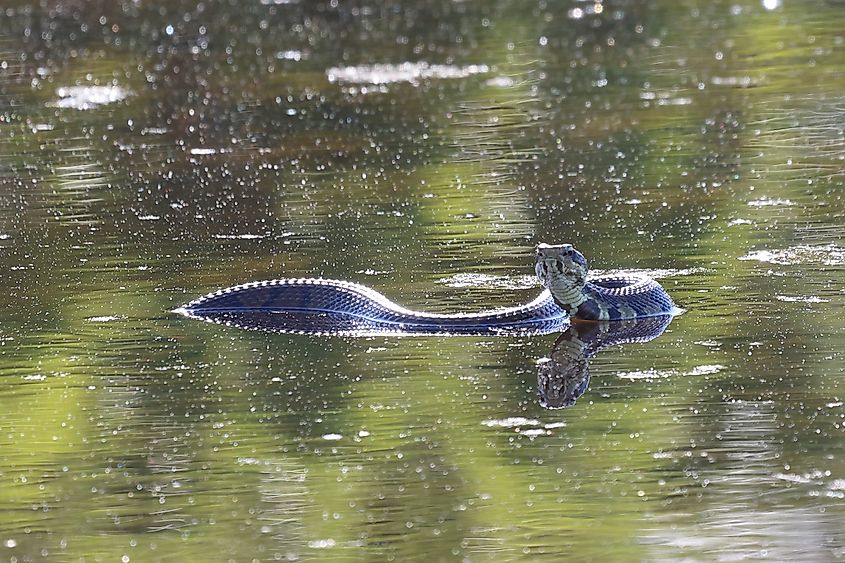
Venomous species, like water moccasins, also known as cottonmouths, are especially common along the riverbanks and in flooded marshes, along with coral snakes and Florida rattlesnakes. Non-venomous species, such as the banded water snake and the brown water snake, are also abundant, often mistaken for their venomous counterparts due to their similar coloration. The river’s many floodplains and cypress swamps provide prime hunting grounds for these reptiles, which feed on fish, frogs, and small mammals.
Encounters are most frequent in the warmer months, particularly near the more undeveloped areas between Lake George and Palatka. While many of the St. Johns' snakes retreat from human activity when possible, their high concentration in this ecosystem makes the river a notable hotspot for herpetologists and wildlife enthusiasts alike. On the other hand, if snakes make you squeamish, maybe skip this place.
Atchafalaya River, Louisiana

The Atchafalaya River in south-central Louisiana is easily another one of the most snake-dense waterways in the country. Flowing for about 140 miles through a vast swamp basin, it supports an exceptional diversity of reptile life of all kinds. The surrounding Atchafalaya Basin, the nation’s largest river swamp, provides an idyllic habitat of flooded forests, bayous, and wetlands where these critters thrive.
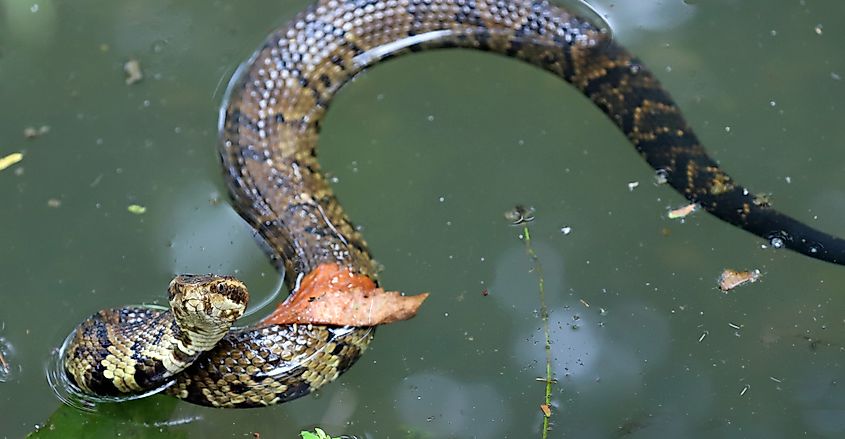
Again, cottonmouths are especially prevalent, often seen basking on logs or swimming through backwaters. Venomous snakes here also include copperheads. Moreover, non-venomous species, such as green water snakes, diamondback water snakes, and ribbon snakes, are also widespread.
The basin’s warm, humid environment and abundant prey make it a year-round refuge for these reptiles. During spring floods, they often move into higher ground and even cross levees and roads, increasing visibility and the chances of run-ins for locals and visitors. For biologists and kayakers exploring Louisiana’s wild interior, however, the Atchafalaya River remains one of the most ecologically and sought-after snake habitats in all of North America.
Mobile-Tensaw Delta, Alabama
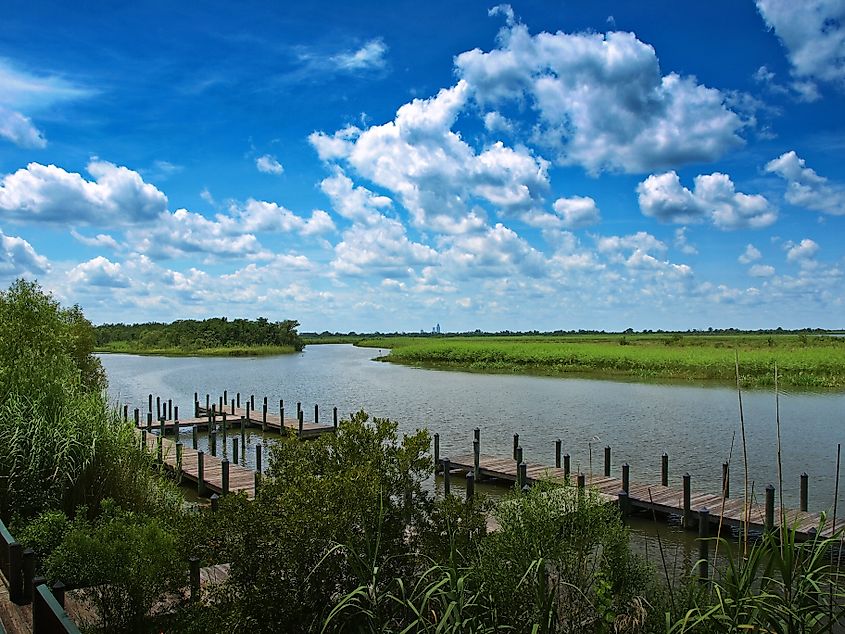
The Mobile-Tensaw Delta in southern Alabama forms a lively environment right in the heart of the Gulf Coast. Formed by the convergence of several rivers, including the Mobile, Tensaw, and Alabama Rivers, this delta covers more than 260,000 acres of swamp, marsh, and cypress-tupelo forest. Its typical Deep Southern warm and humid climate, along with constant water flow, sustains large populations of both venomous and nonvenomous snakes.
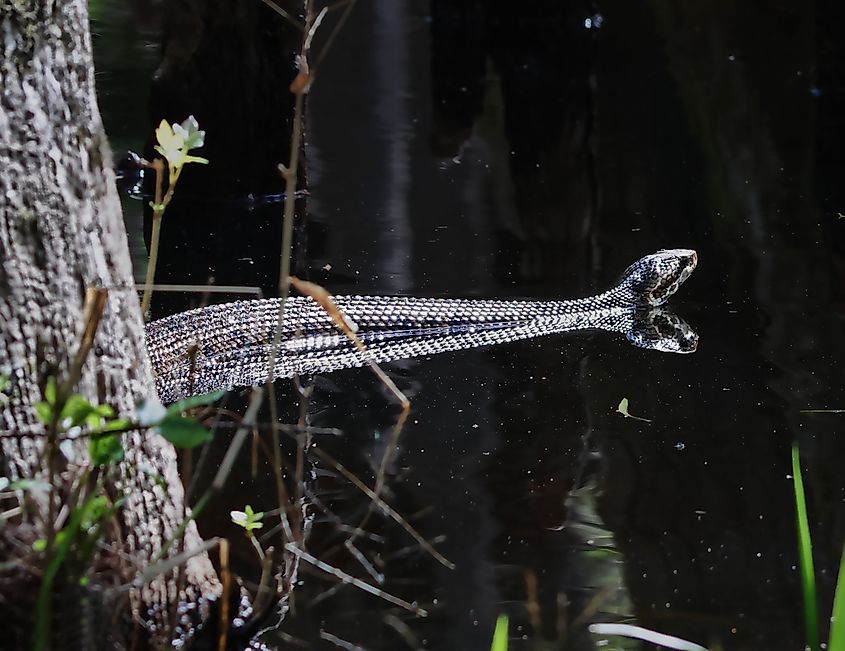
Cottonmouths, yet again, are the most frequently encountered species, especially in the backwaters and flooded hardwood forests, with eastern diamondback rattlesnakes, copperheads, and various water snakes also inhabiting the area. The thick vegetation and maze-like network of bayous provide perfect cover and hunting conditions for these predators, and they are particularly active from late spring through early fall, when the delta’s amphibian and fish populations usually peak.
Often described as “America’s Amazon,” the Mobile-Tensaw Delta is not only a vital ecological zone but also one of the most reptile-rich river systems in the entire Southeast, where not seeing a snake or two is actually a rarity.
Savannah River, South Carolina & Georgia
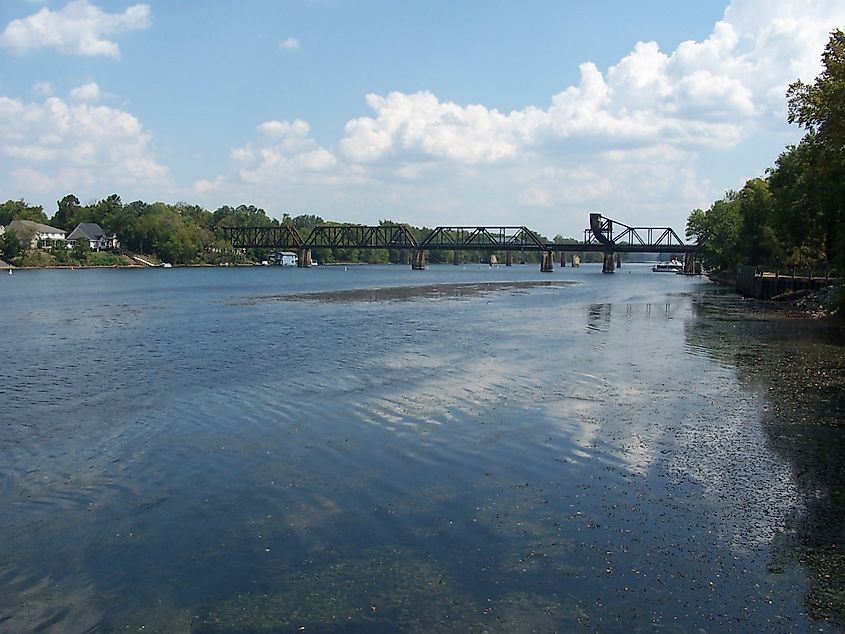
The Savannah River, which forms much of the border between South Carolina and Georgia, is a significant habitat for snakes, shaped mainly by its numerous adjacent wetlands, oxbow lakes, and bottomland forests. Going for just over 300 miles from the Blue Ridge Mountains to the Atlantic Ocean, it supports a wide range of snake species, with copperheads and cottonmouths being the most commonly encountered venomous snakes, particularly in the lower river basin, where slow-moving water, warmer climes, and thick vegetation dominate.
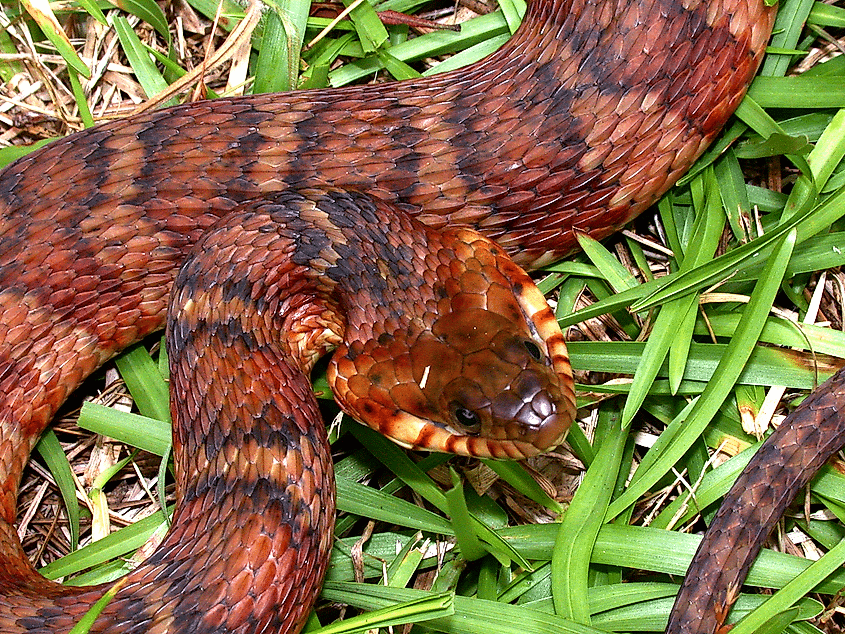
An unusual reddish specimen of banded water snake. Photo: Wikimedia Commons.
Non-venomous snakes, such as the banded water snake, northern water snake, and corn snake, are also abundant in the wetlands near the Savannah National Wildlife Refuge, particularly in active zones where these snakes hunt frogs, fish, and small mammals. Like many southern river systems, seasonal flooding is a yearly experience, expanding their habitat and temporarily driving snakes into areas along the floodplain. You may even see a few just steps away from the busy city streets of downtown Savannah by the river's mouth!
Brazos River, Texas
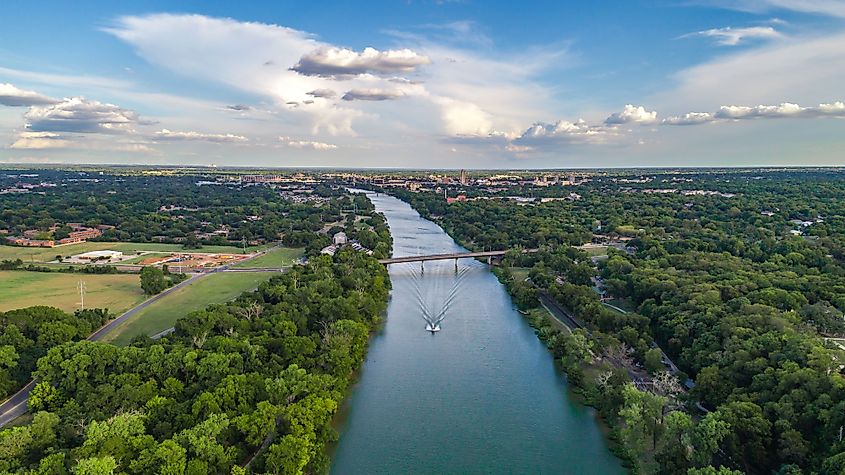
The Brazos River, one of Texas’s longest waterways, runs about 940 miles from the High Plains to the Gulf of Mexico (Gulf of America) and provides a home for a plethora of snakes along its highly varied terrains. In line with much of the south, cottonmouths are the most frequently encountered venomous snakes on the Brazos, particularly in the humid lower basin, where backwaters and marshes provide ideal shelter. Western diamondback rattlesnakes tend to inhabit the drier upper reaches. At the same time, non-venomous species, such as blotched water snakes, rat snakes, and the aptly named Brazos watersnakes, are also widespread throughout the corridor.
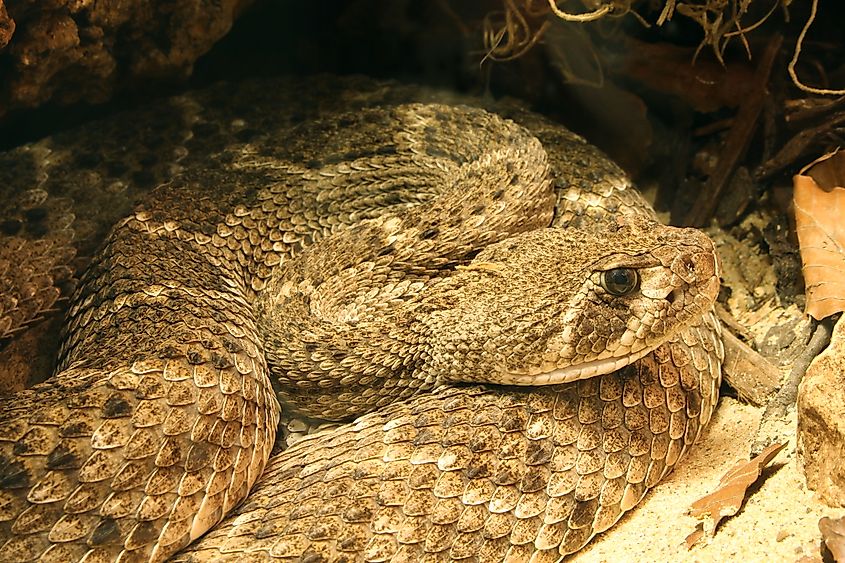
Western Diamondback Rattlesnake, Crotalus atrox, Location: Germany, Ulm, Zoological Garden. Photo: Holger Krisp - Own work via Wikimedia Commons.
Flooding during spring and early summer can often drive snakes into more open areas near the river's banks, increasing visibility near levees and sandbars. The mix of prairie, woodland, and coastal wetland habitats along the Brazos subsequently hosts one of the most diverse reptile populations in the state, from alligators and turtles to, of course, snakes, making it a key river system for studying snake distribution across the Lone Star State.
Missouri River

The Missouri River, stretching over 2,340 miles from Montana to Missouri (crossing North Dakota, South Dakota, Nebraska, Iowa, and Kansas), boasts one of the most extensive riparian ecosystems in North America and harbors a substantial population of northern-dwelling snakes, each equipped to handle the region's cooler climates.
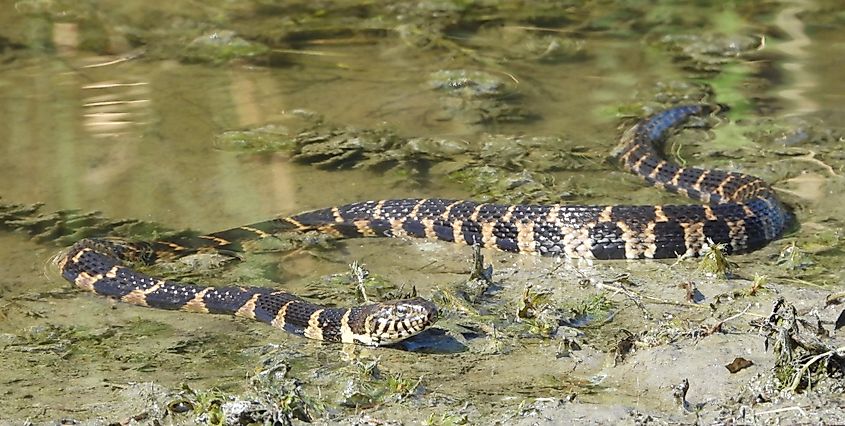
Its vast floodplains, backwater sloughs, and sandbars attract both aquatic and terrestrial species that often shift between water and shore. Northern water snakes (commonly mistaken for venomous cottonmouths) are widespread along the riverbanks in the northern stretches. In the central and lower portions of the river, particularly through Missouri and Kansas, prairie rattlesnakes and copperheads occur in the adjacent bluffs and woodlands. Moreover, bullsnakes and rat snakes thrive in drier stretches where levees and tallgrass prairies meet the river.
Being the longest river in the United States, the Missouri River’s immense size and ecological range make it an essential corridor for the diversity of all kinds, supporting some of the rarest snake species in the country, namely the eastern massasauga rattlesnake, Mississippi green water snakes (last spotted in the area in the mid-90s), and prairie rattlesnakes.
Mississippi River
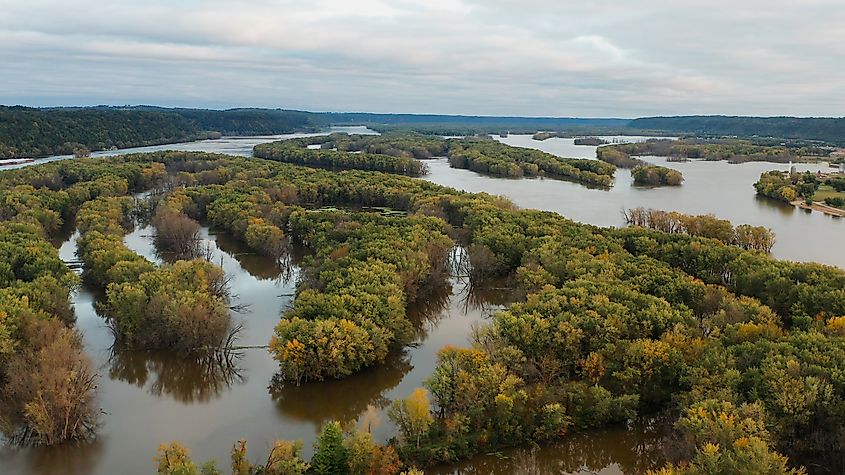
The Mississippi River, ranging 2,320 miles from Minnesota down to the Gulf of Mexico, is probably the most famous in the United States, as well as one of its most snake-populated waterways. Its vast network of tributaries, backwaters, and floodplains hosts numerous cities and nature preserves alike, where snakes, along with countless other kinds of flora and fauna, thrive.

This is a watersnake on the Harpeth river outside Nashville, Tennessee. Potentially a cottonmouth (Agkistrodon piscivorus). Chinmay7 - Own work via Wikimedia Commons.
Water moccasins dominate the southern reaches, especially in Louisiana and Mississippi, where the sub-tropical climate and wetlands support year-round activity. In the lower delta, it’s not unusual to spot several species along the same stretch of riverbank, including the odd American alligator now and then! Farther north towards the Midwest, however, nonvenomous species such as northern water snakes, plain-bellied water snakes, and rat snakes are better suited.
These rivers, each bustling with life, show off just how deeply reptiles are tied to healthy aquatic ecosystems, whether located in tropical paradises or windswept prairies. From the Atchafalaya to the Brazos, these waterways sustain diverse habitats that support both predators and prey for a wide variety of snakes. While often feared, they remain essential to the balance of these environments, marking each of the rivers mentioned above as vital to the overall ecosystems around them.
